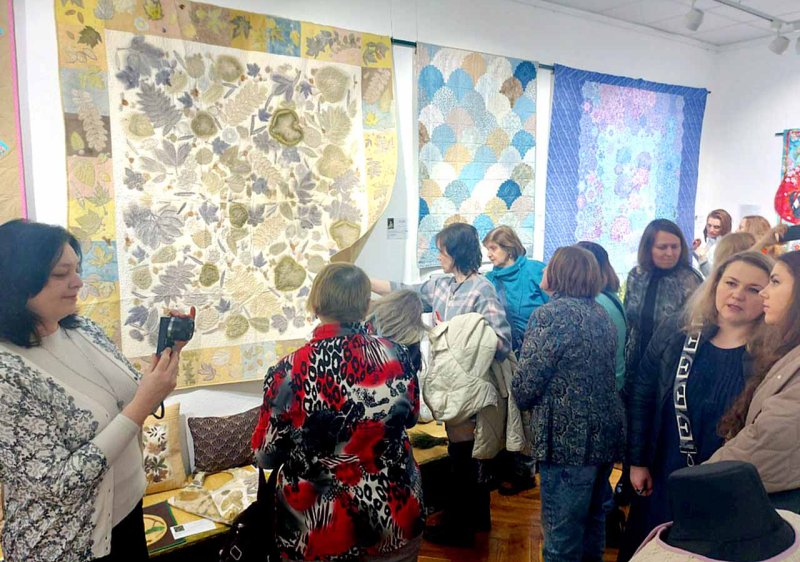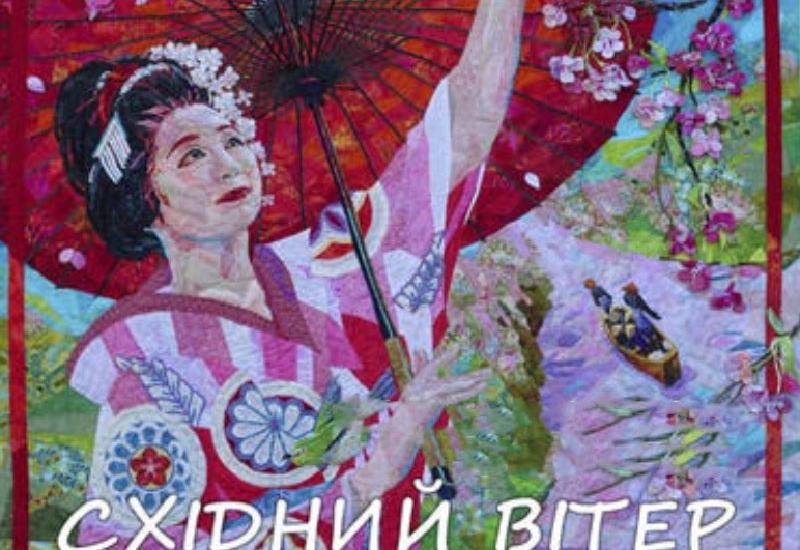At the exhibition of Japanese textile techniques "East Wind", which was opened on March 5 at the Ukrainian-Japanese Center of Igor Sikorsky Kyiv Polytechnic Institute, visitors can see products that show that Ukrainian craftswomen are fluent in the technique of creating embroidered patterns and sashiko panels, and not only that.
The exhibition hall displays the works of thirty amateur embroiderers from Kyiv, Dnipro, Horishni Plavni, and Kamianets-Podilskyi, united by their love for the art of sewing on crepe de chine, cotton, and linen fabrics. Under the guidance of Halyna Tverdokhlib, the teacher of the author's course of Japanese embroidery "Magic Sashiko" (a former sewing production engineer), her students also learn the secrets of textile mosaic (or patchwork, from the English word patchwork - "a blanket, bedspread, product made of colored patches"), direct application, eco-printing techniques, etc.
What motivates the artists to take up the needle and decorate even small scraps with patterns? Judging by the short stories of the exhibition participants told to the KP correspondent at its opening, it helps to find spiritual harmony. The ability to sew a whole product from various pieces of fabrics, using the art of traditional embroidery, encourages one to work.
A textile reuse technique called sashiko - layering several fabrics and quilting them by hand with a needle-forward stitch according to a specific ornamental pattern - is used to create, for example, patchwork quilts or patterns on clothing, women's bags, etc. This three-layer hand embroidery with a colored mosaic top layer is quite complex. This technique is used to decorate, for example, clothing, bedding, etc., using cotton fabric, white cotton threads, and a needle. However, the imagination allows you to use colorful fabric scraps. Beauty without the use of a sewing machine is created when a pattern, abstraction, openwork and floral ornaments, etc. are attached to the main fabric using a special stitch.
... The exhibition opens with a patchwork quilt "Spring is coming, love is bringing, gardens are blooming, everyone is happy" by Natalia Lashko, a craftswoman from Kamianets-Podilskyi. The image of this particular piece adorned the announcement of the exhibition "East Wind". According to Olga Dubova, a graduate of the Magic Sashiko course who is well acquainted with Lashko's work, the quilt is made of hand-sewn and hand-quilted cotton patches. It also features a unique author's technique of embroidery with textile straws. Lashko uses fabric scraps to imitate natural straw embroidery. Embroidery with textile straws is reminiscent of Impressionist painting. Thus, Natalia Lashko depicted a young Japanese woman in a national costume with a higasa (sun umbrella) in her hand on a brightly colored quilt in a blooming sakura garden with birds flying, which are often depicted in Japanese art.

Participants of the exhibition opening ceremony examine the exhibits
The spring motifs inspired by "East Wind" do not end there. The paintings made of natural straw, co-authored by N. Lashko's husband and son Volodymyr and Ilya, are a pleasant sight. Spring blooms on their panels. "The Lashko family of artists is inspired by the work of the famous contemporary painter, People's Artist of Ukraine Ivan Marchuk," Halyna Tverdokhlib, a teacher of the author's patchwork course, emphasizes, "because his painting style is based on the use of intertwined lines that merge into an image and have a dense texture, and consist of spider-like layers of paint. Next, G. Tverdokhlib recommends looking at the applications of ancient Japanese family coats of arms (kamon) by Kyiv-based artists Lyudmyla Sydorenko and Olha Dubova, and eco-prints by Natalia Matvienko. The eco-print technique involves printing patterns on fabric treated with paints made from herbs, flowers, and plant roots.
"If you want to learn the basics of decorative and applied art, when a whole product is sewn together from various pieces of fabric using the principle of mosaic," Halyna Tverdokhlib addressed the audience, "then you should come to our studio classes.
By the way, the funds raised during the opening of the exposition were transferred to the accounts of the Kyiv Polytechnic Charitable Foundation for Support of the Armed Forces.

